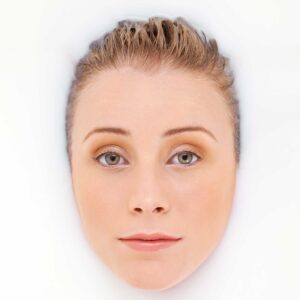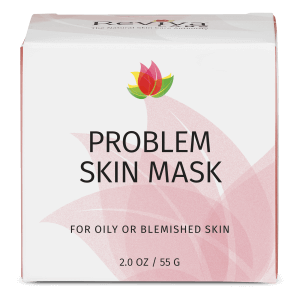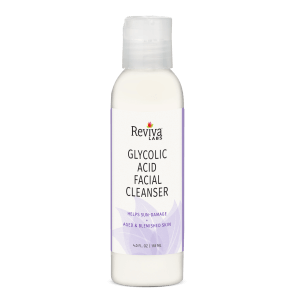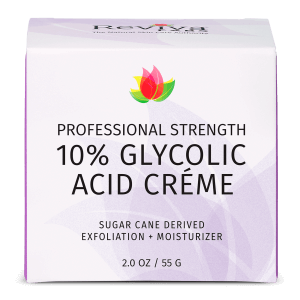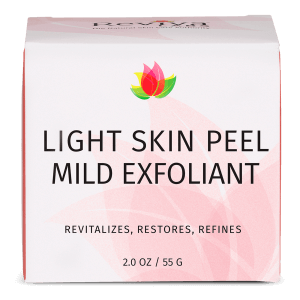Natural, Reviva Labs, Skin Care
Cracking the Code – for an Oily Dehydrated Skincare Routine
Ever gazed into the mirror and wondered why your face manages to be both shiny and flaky simultaneously? You’re certainly not alone! Astonishingly, over 70% of individuals with oily skin also grapple with dehydration, leading to a perplexing mix of skin issues. It’s a skincare puzzle that leaves many scratching their heads—and their faces. Let’s explore this paradox and uncover a skincare routine that brings harmony back to your complexion.
Understanding the intricate dance between oil and hydration is essential. While it might seem counterintuitive, oily skin can be desperately thirsty. When the skin lacks moisture, it often overcompensates by producing excess sebum, resulting in that unwelcome oily sheen. But don’t fret! With the right approach, you can quench your skin’s thirst without adding to the oil slick.
The Dual Nature of Oily Dehydrated Skin
Before crafting the perfect skincare routine, it’s crucial to grasp what’s happening beneath the surface. Oily skin is characterized by overactive sebaceous glands that produce excess oil. Dehydrated skin, conversely, lacks water content. This deficiency triggers the skin to produce more oil in an attempt to lock in moisture—a vicious cycle indeed.
Common signs of oily yet dehydrated skin include a shine coupled with a feeling of tightness, visible pores alongside dry patches, frequent breakouts despite using oil-control products, and makeup that just doesn’t sit right due to uneven skin texture. Recognizing these symptoms is the first step toward restoring balance to your skin.
Gentle Cleansing: Less Is More
It might be tempting to wash your face multiple times a day to combat oiliness, but over-cleansing can strip your skin of its natural moisture barrier. This not only exacerbates dehydration but also prompts your skin to produce even more oil. Choosing the right cleanser is pivotal. Opt for a sulfate-free, pH-balanced formula that removes impurities without drying out your skin. Ingredients like ceramides and niacinamide help maintain the skin’s barrier function.
Limiting cleansing frequency is also important. Washing your face twice a day—morning and night—is sufficient. Overdoing it can lead to increased oil production and dehydration. Don’t underestimate the importance of water temperature either. Using lukewarm water is ideal; hot water can strip oils, while cold water might not effectively cleanse.
Hydrating Toners: The Unsung Heroes
After cleansing, your skin is like a sponge ready to absorb whatever comes next. Hydrating toners can replenish lost moisture and prepare your skin for subsequent products. Look for humectants such as hyaluronic acid, glycerin, and aloe vera, which attract and retain moisture. It’s wise to avoid alcohol-based toners, as they can be overly drying and irritating, worsening dehydration. Gently patting the toner onto your skin using your hands or a soft cotton pad maximizes absorption.
Serums: Targeted Hydration
Serums are concentrated formulations that deliver active ingredients deep into the skin, making them perfect for addressing specific concerns like dehydration. Hyaluronic acid serums are particularly effective; this molecule can hold up to 1,000 times its weight in water, making it a powerhouse for hydration. Antioxidant-rich serums containing vitamin C or green tea extract protect against environmental stressors that dehydrate the skin. Applying serums after toning and before moisturizing ensures maximum absorption.
Lightweight Moisturizers: Seal the Deal
Locking in hydration without clogging pores is the goal here. Heavy creams might overwhelm oily skin, so finding a balance is key. Non-comedogenic options won’t block pores, reducing the risk of breakouts. Gel or lotion formulas are lighter than creams and provide moisture without heaviness. Products with squalane, peptides, or ceramides support the skin barrier effectively.
Sun Protection: A Daily Must
Sun exposure can dehydrate the skin and accelerate aging. Incorporating sunscreen into your routine is non-negotiable. Opt for a broad-spectrum SPF 30 or higher to protect against both UVA and UVB rays. Oil-free formulas prevent additional greasiness and potential breakouts. Reapplying every two hours when outdoors maintains protection throughout the day.
Exfoliation: Clearing the Way
Removing dead skin cells allows your hydrating products to penetrate more effectively. However, over-exfoliation can damage the skin barrier. Limiting exfoliation to once or twice a week is advisable. Gentle exfoliants with lactic acid or polyhydroxy acids (PHAs) are milder than other acids and suitable for sensitive skin. It’s best to avoid physical scrubs, as harsh particles can cause micro-tears and increase sensitivity.

Face Masks: The Weekly Treat
Incorporating hydrating masks into your routine can give your skin an extra moisture boost. Sheet masks infused with serums rich in hyaluronic acid and antioxidants offer a convenient option. Sleeping masks applied before bed lock in hydration overnight, working wonders while you rest. For those who prefer natural remedies, DIY masks with ingredients like honey and yogurt soothe and hydrate effectively.
Lifestyle Factors: Beyond Skincare Products
Your skin reflects your overall health, so simple lifestyle tweaks can significantly impact hydration levels. Staying hydrated by drinking at least eight glasses of water a day is fundamental. Herbal teas and water-rich foods like cucumbers and watermelon contribute to your hydration status. A balanced diet rich in omega-3 fatty acids, such as salmon and flaxseeds, supports skin health from the inside out.
Limiting caffeine and alcohol is also beneficial, as both can dehydrate the skin. If you indulge, balancing it out with extra water helps mitigate the effects. Humidifying your environment, especially in dry climates or during winter, adds moisture to the air and helps maintain skin hydration.
Avoiding Common Pitfalls
Even with the best intentions, certain habits can sabotage your efforts. Overusing mattifying products might temporarily reduce shine but can worsen dehydration over time. Skipping moisturizer because you think your skin is too oily often leads to increased oil production as your skin tries to compensate. Ignoring patch testing when trying new products may result in reactions that compromise your skin barrier, setting back your progress.
When to Seek Professional Help
If your skin doesn’t improve with over-the-counter products, it might be time to consult a dermatologist. Persistent acne or irritation may require professional treatments like chemical peels or prescription medications. A dermatologist provides a customized skincare plan, identifying underlying issues and tailoring a regimen to your specific needs. Advanced therapies such as microneedling or laser treatments can also address deeper concerns.
Consistency Is Key
Remember, skincare is a marathon, not a sprint. It may take several weeks to notice significant improvements. Sticking with your routine and adjusting as necessary based on how your skin responds is crucial. Keeping a skincare journal helps track changes and identify what works best for you.
Embracing the Journey
Navigating the complexities of oily yet dehydrated skin can be challenging, but it’s also an opportunity to better understand your skin’s unique needs. By focusing on hydration without overloading on oil-control products, achieving a balanced, healthy complexion is entirely possible. And hey, if you’re ever feeling overwhelmed, just remember that your skin is incredibly resilient. With a bit of patience and the right care, you can crack the code and enjoy the best of both worlds—a complexion that’s both clear and comfortably hydrated.





